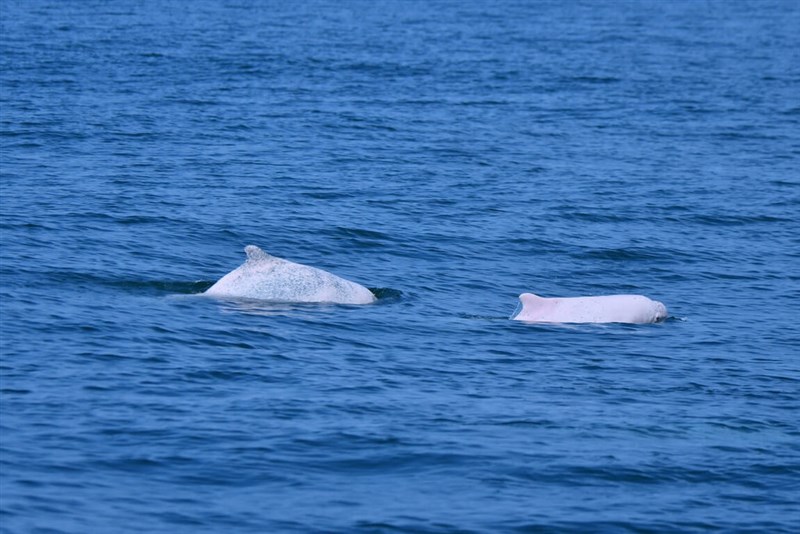
Taipei, July 18 (CNA) Cetacean biologist John Wang (王愈超) said Thursday that the Taiwanese white dolphin population has dropped to about 40-50, and around 60 percent of them are suffering from injuries.
The rapid decline of the critically endangered species is due to development projects along Taiwan's west coast, said Wang, who is dedicated to research of the dolphins, Taiwan's only endemic cetacean.
The projects include offshore wind farms, natural gas construction, and fishery activities, the Canadian researcher said at a press conference held in Taipei by the Wild at Heart Legal Defense Association.
Research shows that 90 percent of Taiwanese white dolphins are found near Taichung Port, but the current plans for expansion of the port will further destroy their habitat, he said.
The white dolphins tend to swim faster when they are going past the port, which indicates that they are disturbed by the port construction and heavy vessel traffic, Wang said.
He said that during his research, he had repeatedly witnessed illegal trawl-net fishing in nearshore waters, which raises the question of why such activities still continue, given that law enforcement authorities should also be aware of them.
Coastal development projects, environmental noise and conflicts with local fishery groups have placed immense stress on the dolphins, Wang said.
The injuries the dolphins sustain as a result of those factors not only cause pain but also significantly shorten their lifespan, he said.
As a result, the Taiwanese while dolphin population has declined to between 40 and 50, and about 60 percent of them have sustained injuries, the researcher said.
As cetaceans tend to reproduce slowly, the white dolphins' breeding rate has been slower than the rate of their decline, he said.
Furthermore, although white dolphins can live up to 40 years, reproduction becomes almost impossible if there is only one male, which could lead to functional extinction, Wang said.
He said that captive breeding is not a viable option, as little is known about the feeding and reproductive behaviors of the species, and confinement is not compatible with their highly social nature.
When Wang first started researching the Taiwanese white dolphin in 2002, the population was about 99, but it has been declining by 3-4 percent per year, according to a news release from the Wild at Heart Legal Defense Association.
The association's founder, Robin Winkler, said at Thursday's press conference that he hoped the white dolphins could co-exist with the development of offshore wind power and sustainable fisheries.
True sustainable development must be based on "not sacrificing other lives," he said.
The Taiwanese white dolphin (Sousa chinensis taiwanensis) is a subspecies of the Indo-Pacific Humpback Dolphin, which is listed as a critically endangered species by the International Union for Conservation of Nature.
Wang is described by the Wild at Heart Legal Defense Association as the first international scholar to record the Taiwanese white dolphin using scientific methods.
He contributed to the identification of the dolphin as a subspecies and was awarded the international Society for Marine Mammalogy's Conservation Merit Prize in 2021.
- Politics
Lai government to seek constitutional ruling on pension reform bill
12/26/2025 10:22 PM - Politics
Cabinet aims to tighten rules on lawmaker, civil servant China visits
12/26/2025 09:33 PM - Society
Man detained after sickle attack in Miaoli
12/26/2025 09:20 PM - Politics
Taiwan's Legislature passes basic law on youth affairs
12/26/2025 09:14 PM - Business
Taiwan set to open 1st overseas recruitment center
12/26/2025 09:07 PM